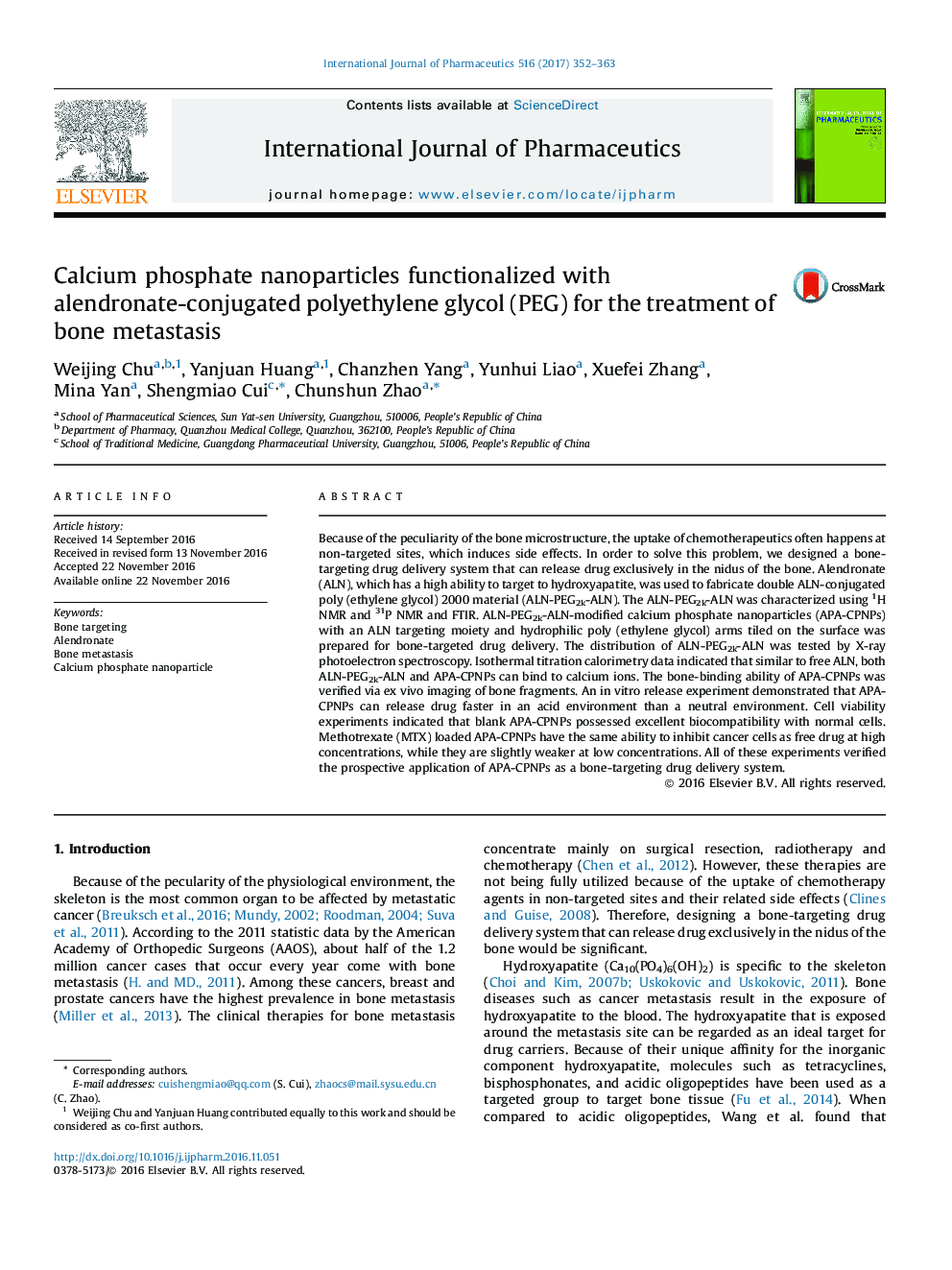| Article ID | Journal | Published Year | Pages | File Type |
|---|---|---|---|---|
| 5550666 | International Journal of Pharmaceutics | 2017 | 12 Pages |
Because of the peculiarity of the bone microstructure, the uptake of chemotherapeutics often happens at non-targeted sites, which induces side effects. In order to solve this problem, we designed a bone-targeting drug delivery system that can release drug exclusively in the nidus of the bone. Alendronate (ALN), which has a high ability to target to hydroxyapatite, was used to fabricate double ALN-conjugated poly (ethylene glycol) 2000 material (ALN-PEG2k-ALN). The ALN-PEG2k-ALN was characterized using 1H NMR and 31P NMR and FTIR. ALN-PEG2k-ALN-modified calcium phosphate nanoparticles (APA-CPNPs) with an ALN targeting moiety and hydrophilic poly (ethylene glycol) arms tiled on the surface was prepared for bone-targeted drug delivery. The distribution of ALN-PEG2k-ALN was tested by X-ray photoelectron spectroscopy. Isothermal titration calorimetry data indicated that similar to free ALN, both ALN-PEG2k-ALN and APA-CPNPs can bind to calcium ions. The bone-binding ability of APA-CPNPs was verified via ex vivo imaging of bone fragments. An in vitro release experiment demonstrated that APA-CPNPs can release drug faster in an acid environment than a neutral environment. Cell viability experiments indicated that blank APA-CPNPs possessed excellent biocompatibility with normal cells. Methotrexate (MTX) loaded APA-CPNPs have the same ability to inhibit cancer cells as free drug at high concentrations, while they are slightly weaker at low concentrations. All of these experiments verified the prospective application of APA-CPNPs as a bone-targeting drug delivery system.
Graphical abstractDownload high-res image (103KB)Download full-size image
